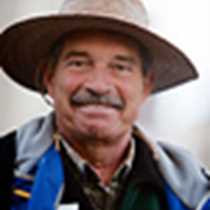Island Of Madeira, Portugal
Second day at Madeira. The weather has been marvelous. The Island of Flowers awaited our awe as we made an early visit to the Botanical Garden of Funchal, the capital. Even the name of the capital is botanical, as it means "place of fennel." And one must consider that the island in itself, having been inhabited by white man so long, has received more than 2000 exotic plants from all over the world. Yet it does boast 88 species of endemic plants, plants whose place of origin is Madeira! Being a mountainous island, it intercepts all the incoming clouds with water, and thanks to its volcanic soils, is very rich in flora.
Some of us made a longer walk, beginning our trek high up in the mountains, and walking down (hah!) a series of "levadas" or waterways directing the excess rain runoff down to the agricultural fields near the cities. They all have a path alongside, and we enjoyed the views (exhilarating!), as well as the greenery. Of course, part of the hike was the exercise provided.Later in the day, after having had lunch in different points of the island, we all returned to the ship and immediately took off to visit the nearby island of Deserta.
Awe? Of course! Everything here is in a big scale. These series of islands are all of volcanic origin, and it’s certainly obvious! We slowly visited part of the coastline by Zodiac, seeing what was probably part of a caldera with high, sheer walls of volcanic material of so many colors. Reds and ochres (limonite), grays and blacks, all forming a series of layers and intersected in crazy angles, dikes of basalt. The island is a sanctuary for marine birds, and landing is not permitted. Besides a few "Sally Lightfoot" crabs and coralline algae, we also saw a series of plants holding precariously to the cliffs. These were the rock samphyr in the carrot family. Further up, we could barely see a few smaller bushes. Deffinitely a harsh place to live! Now, there is a small species of marine mammal that lived here for probably millions of years until humans appeared. It is the Mediterranean Monkseal, solitary, reclusive, unknown. The animals were captured for different reasons, probably mostly for their oil. This led to the almost complete disappearance of the species. The tiny population in Madeira is to be found in this area, and consists, according to researchers, of only 23 animals. And we were lucky enough to see one! It swam around us fearlessly, even following our trail of engine bubbles for a short while! And it also offered us an opportunity to take some pictures. Feeling almost touched by the Gods, we returned to our ship, and sailed on to another archipelago of islands, the Canaries.
Second day at Madeira. The weather has been marvelous. The Island of Flowers awaited our awe as we made an early visit to the Botanical Garden of Funchal, the capital. Even the name of the capital is botanical, as it means "place of fennel." And one must consider that the island in itself, having been inhabited by white man so long, has received more than 2000 exotic plants from all over the world. Yet it does boast 88 species of endemic plants, plants whose place of origin is Madeira! Being a mountainous island, it intercepts all the incoming clouds with water, and thanks to its volcanic soils, is very rich in flora.
Some of us made a longer walk, beginning our trek high up in the mountains, and walking down (hah!) a series of "levadas" or waterways directing the excess rain runoff down to the agricultural fields near the cities. They all have a path alongside, and we enjoyed the views (exhilarating!), as well as the greenery. Of course, part of the hike was the exercise provided.Later in the day, after having had lunch in different points of the island, we all returned to the ship and immediately took off to visit the nearby island of Deserta.
Awe? Of course! Everything here is in a big scale. These series of islands are all of volcanic origin, and it’s certainly obvious! We slowly visited part of the coastline by Zodiac, seeing what was probably part of a caldera with high, sheer walls of volcanic material of so many colors. Reds and ochres (limonite), grays and blacks, all forming a series of layers and intersected in crazy angles, dikes of basalt. The island is a sanctuary for marine birds, and landing is not permitted. Besides a few "Sally Lightfoot" crabs and coralline algae, we also saw a series of plants holding precariously to the cliffs. These were the rock samphyr in the carrot family. Further up, we could barely see a few smaller bushes. Deffinitely a harsh place to live! Now, there is a small species of marine mammal that lived here for probably millions of years until humans appeared. It is the Mediterranean Monkseal, solitary, reclusive, unknown. The animals were captured for different reasons, probably mostly for their oil. This led to the almost complete disappearance of the species. The tiny population in Madeira is to be found in this area, and consists, according to researchers, of only 23 animals. And we were lucky enough to see one! It swam around us fearlessly, even following our trail of engine bubbles for a short while! And it also offered us an opportunity to take some pictures. Feeling almost touched by the Gods, we returned to our ship, and sailed on to another archipelago of islands, the Canaries.




